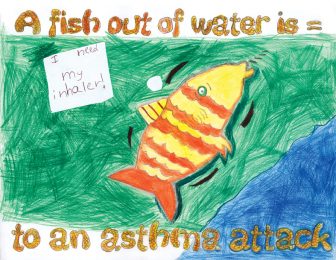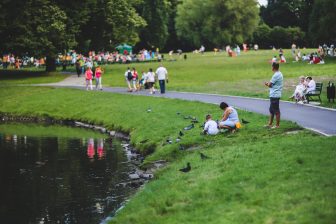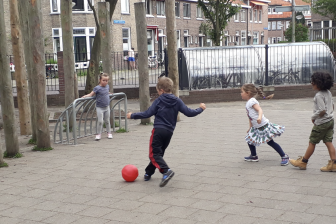
Why can’t I play in our schoolyard?
Breathing air that does not make us ill is something that most of us take for granted, but for children who have asthma or pollen allergies, even playing outside at school can be seriously hazardous. Here, Peter Prakke explains why, with more awareness in landscaping, this need not be the case.
All children should be able to enjoy active play during recess or other play times while they are at school, not least because the exercise they get from free play is vital for their health; helping to reduce obesity levels and many other benefits.
 However, for a significant number of children this opportunity is denied them because they are allergic to the shrubs and trees growing in the school grounds. Having to worry about asthma or other allergic reactions, many children can’t play soccer, baseball or other sports and games, or even just run around playing with their friends. For them, the birch or oak trees surrounding the playing fields mean runny eyes, sneezing and wheezing before they have even kicked a ball, or swung a rope.
However, for a significant number of children this opportunity is denied them because they are allergic to the shrubs and trees growing in the school grounds. Having to worry about asthma or other allergic reactions, many children can’t play soccer, baseball or other sports and games, or even just run around playing with their friends. For them, the birch or oak trees surrounding the playing fields mean runny eyes, sneezing and wheezing before they have even kicked a ball, or swung a rope.
The nightmare of asthma
These children may not, for example, be able to play hopscotch with the rest of their group because there’s a male juniper hedge beside the playground; play basketball, because male clonal red maple trees in the school garden produce so much pollen that it attacks their nose and eyes.
Asthma is now the most common chronic childhood disease in the US and Canada, and pollen-allergies – no fun in themselves – are often the precursor to the illness. In an environment like the one described, children with asthma or pollen allergies can’t run around the schoolyard or playing field. For them, school life can be a nightmare. Although there are exceptions, this is the situation in a very large number of schools, in which the play areas and school grounds were first landscaped without any thought about how allergenic they might eventually become.
Asthma is now the most common chronic childhood disease in the US and Canada
 When children play, especially at school, where they are ‘letting off steam’ in between formal lessons, they exercise their whole bodies: it is their natural aerobic work-out. Children running around the playground will tend to use twice the oxygen of the average adult. If the air around them is loaded with pollen, this means they will inhale double the amount. Children are also smaller; their bodies not as well developed. As such, they are much more sensitive to allergenic pollen than adults are.
When children play, especially at school, where they are ‘letting off steam’ in between formal lessons, they exercise their whole bodies: it is their natural aerobic work-out. Children running around the playground will tend to use twice the oxygen of the average adult. If the air around them is loaded with pollen, this means they will inhale double the amount. Children are also smaller; their bodies not as well developed. As such, they are much more sensitive to allergenic pollen than adults are.
No child should have to go to a school where the landscaping is allergenic. Using the Ogren Plant Allergy Scale (OPALS®), it is perfectly possible to landscape, or re-landscape, school grounds to be allergy-friendly.
This, surely, is one of children’s most basic rights: to breathe air that is clean and free of allergens and so enjoy playing in the outdoor world with their friends.
Peter Prakke
Main photo: Jose Kevo
Inset images: Baylor Health (from entries to the Art for Asthma contest, 2009)
For more information about allergy-free landscaping and gardening contact: the Society for Allergy-Friendly Environmental (SAFE) Gardening. www.safegardening.org




